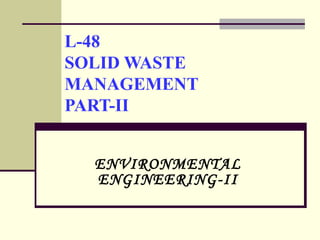The document discusses hazardous waste management, defining solid wastes as hazardous based on characteristics such as ignitability, corrosivity, reactivity, and toxicity. It highlights waste generation and disposal methods in India, noting the challenges faced in effective solid waste management, including unscientific disposal and inadequate infrastructure. Various disposal methods such as landfill, incineration, and composting are explained, alongside their advantages and disadvantages.











































































